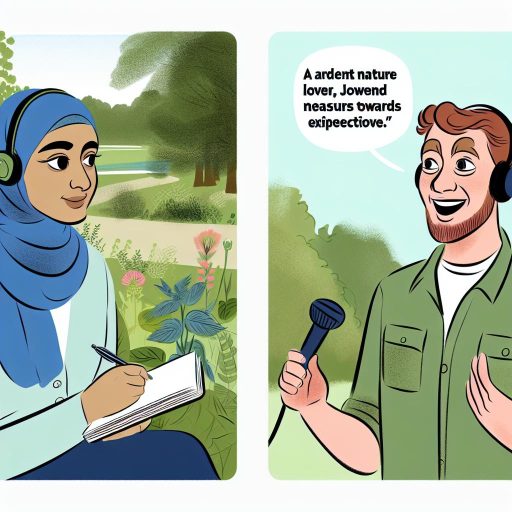Introduction
Conservation projects around the world are pushing the boundaries of innovation to protect our planet’s precious natural resources.
Brief Explanation of Innovative Conservation Projects
These projects involve implementing cutting-edge technologies and creative strategies to address environmental challenges.
Importance of Conservation Efforts Worldwide
Conservation efforts are crucial in preserving biodiversity, mitigating climate change, and ensuring a sustainable future for generations to come.
Project 1: The Great Green Wall in Africa
The Great Green Wall is an ambitious initiative to combat desertification and land degradation in the Sahel region of Africa.
It involves the planting of a wall of trees that spans over 8,000 kilometers across the continent.
Description of the project
The Great Green Wall is an ambitious initiative to combat desertification and land degradation in the Sahel region of Africa.
It involves the planting of a wall of trees that spans over 8,000 kilometers across the continent.
Goals and objectives
The main goal of the Great Green Wall project is to revitalize degraded landscapes, boost food security, and create jobs for local communities.
Additionally, the project aims to mitigate the effects of climate change and protect biodiversity in the region.
Impact on local communities and ecosystems
The Great Green Wall project has had a significant impact on the lives of local communities in the Sahel region.
By restoring degraded land, the project has helped to improve soil fertility, increase water availability, and enhance agricultural productivity.
This has led to better livelihoods for farmers and reduced vulnerability to climate-related shocks.
Moreover, the project has contributed to the conservation of biodiversity by creating habitats for a variety of plant and animal species.
The increased vegetation cover has also helped to reduce erosion and restore natural ecosystems, leading to a more sustainable environment for both people and wildlife.
The Great Green Wall project in Africa is a prime example of an innovative conservation initiative that not only addresses environmental challenges but also promotes sustainable development and improves the well-being of local communities.
Project 2: The Ocean Cleanup in the Pacific Ocean
One of the most ambitious conservation projects in recent years is The Ocean Cleanup, focused on cleaning up the Great Pacific Garbage Patch.
Explanation of the project
- The Ocean Cleanup project was founded by Boyan Slat in 2013 with the goal of removing plastic debris from the oceans.
- The project specifically targets the Great Pacific Garbage Patch, a massive area of floating debris between Hawaii and California.
- The system used is a passive cleanup technology that harnesses the natural forces of the ocean to collect and concentrate plastic waste.
Technology and methods used
- The Ocean Cleanup system consists of a long floating screen that is 600 meters in length and sits at the surface of the water.
- The system uses ocean currents to passively trap and concentrate plastic debris, while marine life can safely pass underneath the barrier.
- The collected plastic waste is then retrieved by support vessels and transported back to land for recycling and proper disposal.
Results and achievements so far
- The Ocean Cleanup project has successfully deployed its first system in the Pacific Ocean in 2018, marking a significant milestone in marine conservation efforts.
- Initial results have shown that the system is effective in capturing plastic debris, with a notable reduction in the amount of waste in the target area.
- Continuous monitoring and improvements are being made to enhance the system’s efficiency and maximize its impact on cleaning up the oceans.
You Might Also Like: Role and Duties of an Agricultural Technician
Project 3: The Rewilding Europe Initiative
The Rewilding Europe initiative is a groundbreaking project aimed at restoring and protecting the continent’s natural landscapes and wildlife.
Through a combination of species reintroduction and habitat restoration, the project is creating opportunities for nature to thrive once again.
Overview of the Project
- Rewilding Europe focuses on large-scale conservation efforts across the continent.
- The project aims to restore degraded landscapes and promote biodiversity conservation.
- By reintroducing keystone species, Rewilding Europe aims to restore ecosystems to their natural balance.
- The initiative also works closely with local communities to promote sustainable conservation practices.
Species Reintroduction and Habitat Restoration
- Rewilding Europe has successfully reintroduced iconic species such as the European bison and the Iberian lynx.
- These reintroduced species play a crucial role in restoring the natural balance of ecosystems.
- The project also focuses on restoring wetlands, forests, and grasslands to enhance habitat diversity.
- By creating wildlife corridors, Rewilding Europe allows animals to move freely across landscapes.
Success Stories and Challenges Faced
- One of the major success stories of Rewilding Europe is the recovery of the Iberian lynx population.
- By implementing conservation measures, the population of these endangered cats has increased significantly.
- However, the project also faces challenges such as habitat fragmentation and human-wildlife conflicts.
- Securing funding for long-term conservation efforts is also a critical challenge for Rewilding Europe.
The Rewilding Europe initiative is an innovative conservation project that is reshaping the natural landscapes of Europe.
Transform Your Career Today
Unlock a personalized career strategy that drives real results. Get tailored advice and a roadmap designed just for you.
Start NowThrough species reintroduction and habitat restoration, the project is not only restoring biodiversity but also creating opportunities for wildlife to thrive.
Despite facing challenges, the success stories of Rewilding Europe demonstrate the importance of such initiatives in promoting sustainable conservation practices.
Delve into the Subject: Understanding the Role of an Animal Nutritionist
Project 4: The Rainforest Trust in South America
Founded in 1988, the Rainforest Trust is a non-profit organization dedicated to preserving and protecting the most threatened tropical forests around the world.
Purpose of the organization
- One of their primary goals is to acquire and protect tropical lands to save endangered species and combat climate change.
- They work with local partners to establish protected areas and promote sustainable land use practices.
Conservation strategies employed
- The Rainforest Trust uses a science-based approach to identify priority areas for conservation based on biodiversity and threat levels.
- They engage directly with local communities to ensure their involvement in conservation efforts and provide economic incentives for forest protection.
- Through strategic land purchases and legal protections, they create permanent reserves that safeguard critical habitats and wildlife species.
Conservation outcomes and future plans
- As a result of their efforts, the Rainforest Trust has helped protect over 23 million acres of tropical forests worldwide.
- They have successfully established dozens of reserves in South America, home to some of the most diverse ecosystems on the planet.
- Looking ahead, the organization aims to expand their conservation work, focusing on areas with high biodiversity and urgent threats.
- They continue to collaborate with local communities, governments, and other partners to ensure the long-term protection of critical habitats.
Find Out More: Effective Communication for Pest Control Advisors

The Elephant Crisis Fund in Asia
One innovative conservation project making significant strides in protecting elephant populations is the Elephant Crisis Fund in Asia.
This initiative focuses specifically on elephant conservation efforts in the region, aiming to combat the threats faced by these majestic animals.
Focus on Elephant Conservation
The Elephant Crisis Fund places a strong emphasis on the conservation of elephants in Asia, recognizing the urgent need to protect these iconic species from poaching, habitat loss, and human-wildlife conflict.
By focusing on elephant conservation, the project aims to ensure the survival of these magnificent creatures for future generations.
Anti-Poaching Efforts and Community Engagement
One of the key strategies employed by the Elephant Crisis Fund is anti-poaching efforts.
Poaching remains a serious threat to elephants in Asia, driven by demand for ivory and other body parts.
The project works to combat poaching through increased patrols, intelligence gathering, and collaboration with law enforcement agencies.
In addition to anti-poaching efforts, the Elephant Crisis Fund also prioritizes community engagement.
Local communities play a crucial role in elephant conservation, and the project works closely with them to raise awareness, provide alternative livelihood options, and promote coexistence between people and elephants.
By fostering positive relationships with communities, the project builds support for conservation efforts and ensures sustainable conservation practices.
Progress Made in Protecting Elephant Populations
Through its focused approach on elephant conservation, anti-poaching efforts, and community engagement, the Elephant Crisis Fund has made significant progress in protecting elephant populations in Asia.
By addressing the root causes of threats to elephants and working collaboratively with local communities and governments, the project has helped to reduce poaching, mitigate human-wildlife conflict, and secure vital habitats for elephants.
As elephant populations continue to face various threats, initiatives like the Elephant Crisis Fund play a crucial role in safeguarding these animals and preserving the rich biodiversity of the region.
See Related Content: Irrigation Specialist: Continuing Education and Training
Project 6: The Coral Restoration Foundation in the Caribbean
The Coral Restoration Foundation in the Caribbean is a pioneering project focused on restoring and preserving coral reefs in the region through innovative conservation efforts.
Transform Your Career Today
Unlock a personalized career strategy that drives real results. Get tailored advice and a roadmap designed just for you.
Start NowWith coral reefs facing threats such as climate change, overfishing, and pollution, traditional conservation methods are no longer sufficient to protect these vital ecosystems.
The foundation employs a variety of coral restoration techniques, including coral propagation and outplanting, to help rebuild damaged reefs and promote their recovery.
By working closely with local communities and stakeholders, the foundation ensures that its conservation efforts are sustainable and have a lasting impact on the health of the marine environment.
Collaboration with fishermen, scientists, and government agencies allows for the sharing of knowledge and resources, leading to more effective conservation practices.
The foundation’s projects not only benefit the coral reefs themselves but also have a positive impact on the overall marine biodiversity of the Caribbean region.
Restoring coral reefs helps to create habitats for a wide range of marine species, contributing to the health and resilience of the entire ecosystem.
By preserving and enhancing coral reefs, the foundation is also helping to protect the livelihoods of local communities that rely on the marine environment for sustenance and income.
Overall, the Coral Restoration Foundation’s innovative conservation projects are making a significant difference in the fight to protect and restore coral reefs in the Caribbean.
- Coral reef restoration techniques
- Collaboration with local communities and stakeholders
- Impact on marine biodiversity and ecosystem health
Innovative Conservation Initiatives
After exploring various innovative conservation projects around the world, it’s clear that these initiatives play a crucial role in protecting our environment and biodiversity.
By implementing creative solutions and engaging local communities, these projects have the potential to make a significant impact on conservation efforts.
Recap of the Importance of Innovative Conservation Projects
Innovative conservation projects are essential for preserving our planet’s natural resources and ensuring a sustainable future for generations to come.
These projects not only help protect endangered species and ecosystems but also contribute to overall environmental health and well-being.
Call to Action for Supporting Conservation Initiatives Worldwide
It’s important for individuals, organizations, and governments to support and invest in innovative conservation projects worldwide.
Whether through donations, volunteer work, or advocacy, everyone can play a role in protecting our planet and promoting a more sustainable future.
Together, we can make a difference and ensure that innovative conservation projects continue to thrive and make a positive impact on our world.




